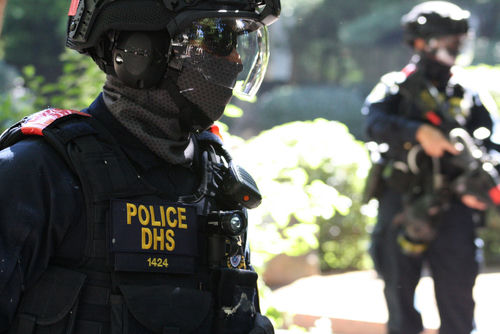A suspected Latin Kings gang member allegedly put a bounty on a high-ranking Border Patrol official’s life, exposing the dangerous reality that immigration enforcement personnel face deadly threats from criminal organizations operating within our borders.
Gang Threat Against Border Security Leadership
The Department of Homeland Security arrested an alleged member of the Latin Kings gang on charges of offering a bounty for the assassination of Border Patrol Chief Gregory Bovino. This brazen threat against a senior law enforcement official underscores the violent nature of criminal organizations that have flourished amid years of lax border enforcement. The arrest demonstrates the life-threatening risks that dedicated border security personnel face daily while protecting American communities from illegal entry and criminal activity. Such targeting of law enforcement leadership represents an escalation in gang violence that demands immediate attention.
Depraved individuals – who do not value human life and threaten law enforcement – do NOT belong in this country.
Thanks to ICE and our federal law enforcement partners, Juan Espinoza Martinez, a member of the Latin Kings street gang who placed a bounty on U.S. Border Patrol… pic.twitter.com/CgKJbs76go
— Homeland Security (@DHSgov) October 7, 2025
Trump Administration’s Border Security Response
President Trump’s second administration has taken aggressive action to dismantle criminal networks operating along the southern border. On his first day in office, Trump signed executive orders declaring a national emergency at the Mexico-United States border and officially designating certain international cartels and criminal organizations as terrorists. The administration eliminated the “sensitive locations” policy, allowing Immigration and Customs Enforcement to conduct arrests in previously protected areas. These decisive measures represent a stark departure from previous policies that critics argue enabled criminal organizations to operate with impunity. By empowering ICE and expanding enforcement capabilities, the administration aims to protect both American communities and the brave officers serving on the front lines.
Mass Deportation Operations Underway
Under Border Czar Tom Homan’s direction, ICE has commenced widespread deportation operations targeting criminal aliens and gang members. The Department of Homeland Security reported deporting over 207,000 migrants by June 2025, implementing the largest deportation program in decades. Trump signed the Laken Riley Act on January 29, 2025, mandating detention of immigrants charged with or convicted of certain crimes. These enforcement actions have contributed to illegal border crossings falling to their lowest levels in decades during the first months of Trump’s presidency. The administration’s approach prioritizes removing dangerous criminals who threaten American safety, including gang members like those allegedly involved in threatening federal officers.
“They know when ICE shows up in their communities it’s going to be a bad day for gang members.”
—@ICEDeputy on arresting a Latin Kings gang member who put bounty on U.S. Border Patrol Chief pic.twitter.com/WxA708GqEq
— U.S. Immigration and Customs Enforcement (@ICEgov) October 10, 2025
Constitutional Concerns and Law Enforcement Authority
The administration’s immigration enforcement expansion has sparked debate over executive power limits and constitutional protections. Attorney General Pam Bondi issued a directive on March 14, 2025, allowing law enforcement to enter migrants’ homes without warrants, raising Fourth Amendment questions among civil liberties advocates. Critics argue some deportations have occurred without proper due process, though supporters contend aggressive action is necessary to dismantle criminal networks that pose immediate threats. The bounty case against Chief Bovino illustrates why enhanced enforcement authority may be justified when dealing with organized criminal enterprises willing to target American law enforcement officials. Protecting officers requires tools adequate to confront sophisticated gang operations that have embedded themselves in immigrant communities.
Sources:
Immigration policy of the second Trump administration – Wikipedia
The Trump Administration’s 2025 Changes to Immigration Law – NYC Bar Association
Ten Harmful Trump Administration Immigration and Refugee Policies – Human Rights Watch
The First 100 Days of the Second Trump Administration – Forum Together

